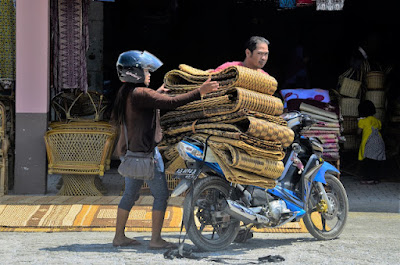Pink Poui or Tabebuia rosea flowering well along a coastal road in Kidurong township, Bintulu.
I have a great passion for plants which probably was cultivated in my early childhood days of the early 60's when I often provided a helping hand to my grandpa who used to sweep the garden floor and plant fruit trees at a small garden in the village. I used to help my mother water and weed some of the plants she planted around the government quarters house with flowering shrubs, sun-loving herbs and herbaceous annuals. In school I joined the gardening club which encouraged me in the planting of flowers, grasses and trees to beautify the school compound and their maintenace like pruning, fertilising and watering. At a more matured age I was extremely fortunate to be given the portfolio of landscaping of Bintulu town over many years resulting in planting of landscape trees for golf course, parks, roadsides, and many other civic areas like mosques, children's playgrounds, wildlife parks, mini-botanic gardens, recreational beach areas and roundabouts. When I made landscaping my focus in business I did lots of landscape projects for big corporations and foreign companies' housing in Bintulu. When finally I decided to seriously think about the concept of Malaysian garden I spent many years developing a nature park and an urban garden with my own finances so that the concept of Malaysian garden be better explained and experimented upon. This adventure of my life continues.
Through various blogs I hope enthusiasts and practitioners of the Malaysian garden ( Laman Kambatik) will find a ready, online 24x7 and free source of plant names suitable for the Malaysian garden available at their fingertips. The collection of these photos have brought me places all over Malaysia and the thousands of pageviews on the four editions of the plants list series has been worth the time and expenses. Enjoy the blogs and happy gardening.
Happy Malaysia Day Sarawak.
(Note: This is Article #12 in a series to celebrate Malaysia's national day (Malaysia Day) - 16 Sept annually)
Planting with bougainvilleas at a traffic junction in Kuching, Sarawak.























